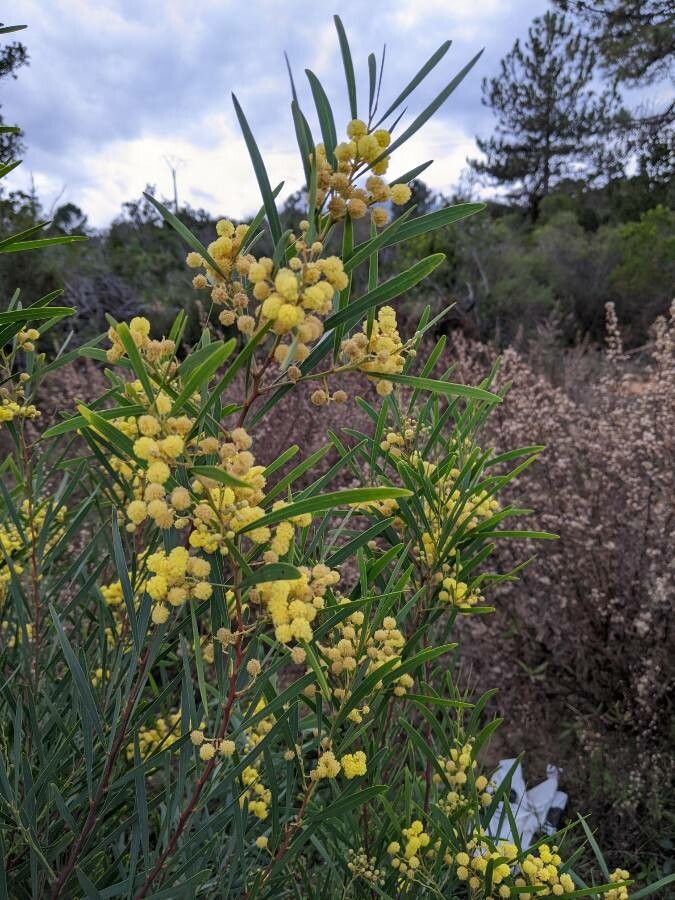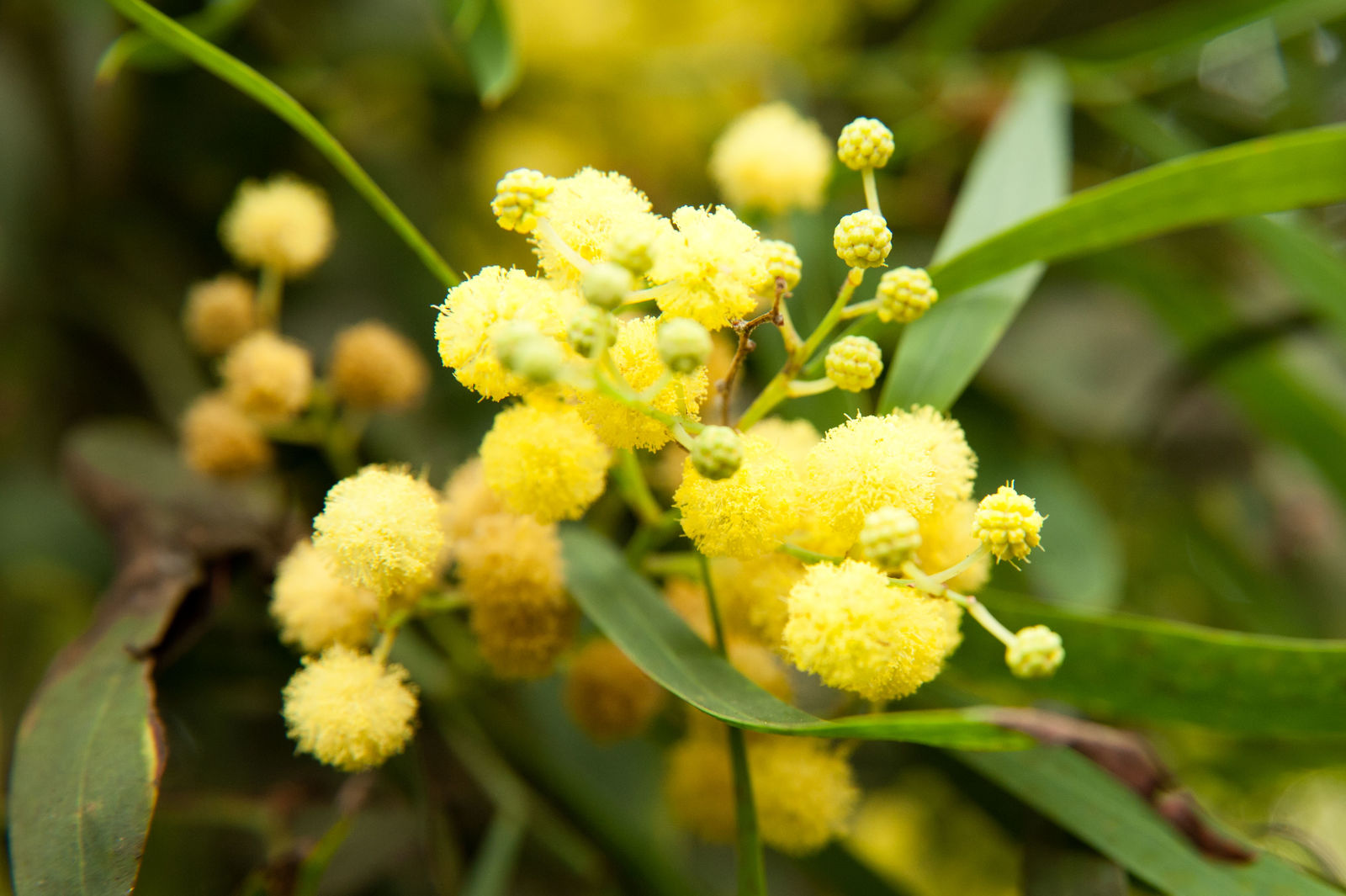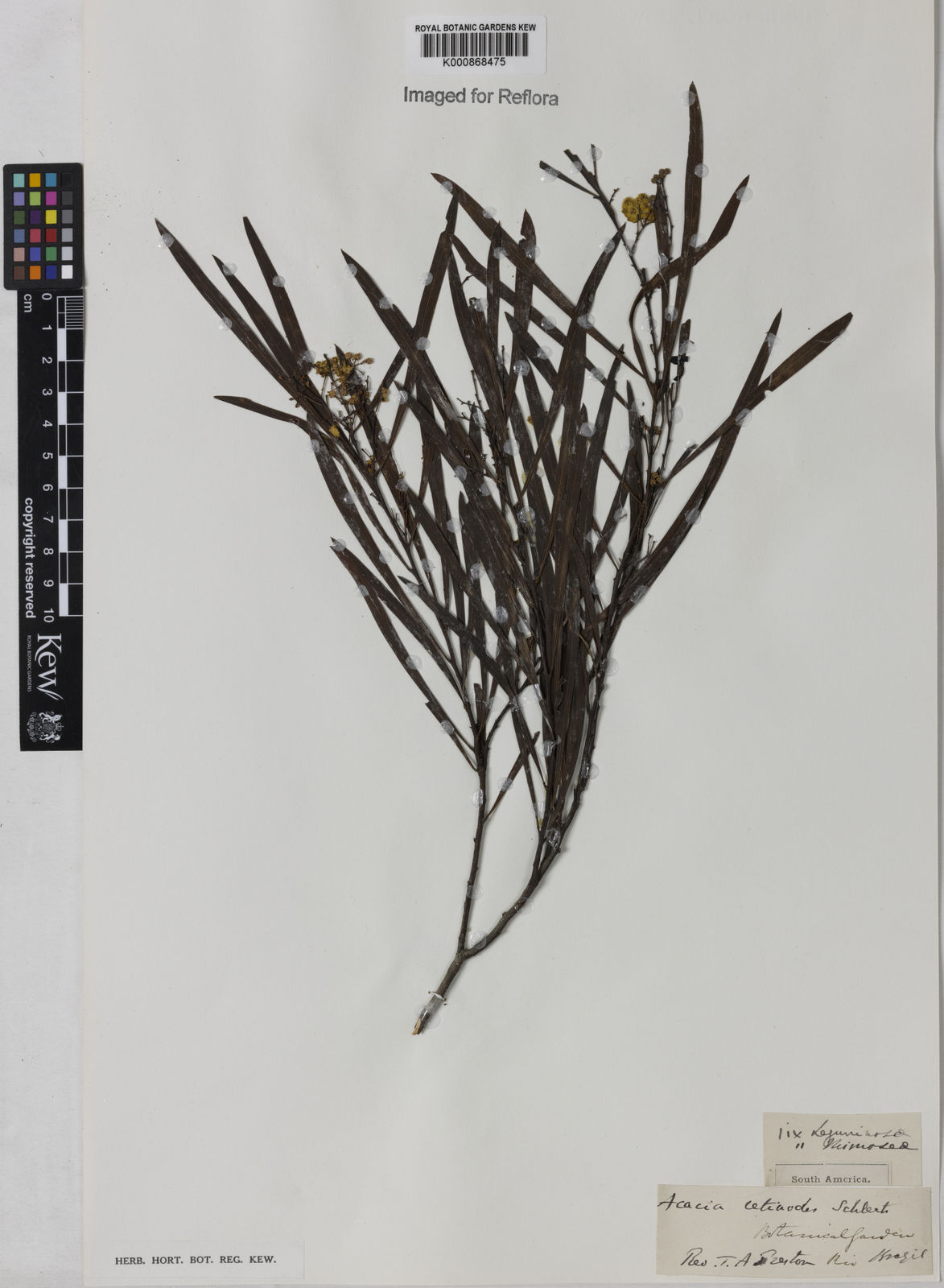Swamp Wattle
acacia retinodes
Also known as: ["Myall Water Wattle","Wirilda"]
Overview
A fast-growing, evergreen shrub or small tree native to South Africa, known for its silvery-blue foliage and bright yellow spherical flowers that bloom in spring and fall.
Benefits & Perks
["long-flowering","drought tolerant","wildlife attractant (bees, butterflies, birds)"]
Botanical Classification
| Phylum: | Magnoliophyta |
| Class: | Magnoliopsida |
| Order: | Fabales |
| Family: | Fabaceae |
| Genus: | Acacia |
| Botanical Name: | Acacia retinodes |
Plant Characteristics
Basic Information
- Category: Shrubs
- Suitable Location: outdoor garden in a sunny spot, or as a container plant in a bright, sheltered location
- Suitable For:
- Is Weed: No
- Allergenicity: low
Environmental Needs
- Climate: {"temperatureRange":"5–40°C"}
- Hardiness: {"zones":"9–11"}
- Misting: rarely required, only if grown in very dry indoor conditions
- Drainage: Fast-draining to prevent root rot.
- Soil Type: Well-draining mix of cactus soil, perlite, and a small amount of compost.
Maintenance Level
- Maintenance Level: moderate
- Toughness Level: high
- Pruning Frequency: Annually in late winter or early spring; light pruning can be done as needed.
- Pruning Intensity: Moderate; remove up to one-third of old growth if necessary.
Care Details
Ideal Sunlight Coverage:
Full sun (6–8 hours of direct sunlight daily); tolerates partial shade but may become leggy.
Sunlight Tolerance Tips:
Acclimate gradually if moving from shade to sun; protect from intense midday sun in summer; ensure bright light indoors.
Care Requirements
Care Difficulty
easymoderate
Sunlight
full sun to partial shade
Rotate plant for even growth; use sheer curtains to filter harsh sun; place near south-facing window indoors.
Watering
every 7–14 days, depending on climate and soil conditions
Water thoroughly until runoff, ensure soil dries between waterings, and adjust frequency based on season and weather.
Soil
well-draining, sandy or loamy soil with moderate organic content
pH: Slightly acidic to neutral (pH 6.0–7.0).
Ensure pots have drainage holes; avoid heavy clay soils; topdress with compost annually.
Temperature
Prefers 65–85°F (18–29°C); tolerates mild frosts but thrives in warm conditions.
Avoid sudden temperature shifts; protect from frost; ensure good air circulation.
Fertilizing
every 2–3 months during active growth, using a balanced, slow-release fertilizer
Fertilize only when actively growing; flush soil occasionally to prevent salt buildup; use slow-release fertilizer for convenience.
Propagation
Methods
Stem cuttings or seed; stem cuttings are more reliable for home growers.
Step-by-Step Propagation Guide
- Take 4–6 inch cuttings.
- Remove lower leaves.
- Dip in hormone.
- Plant in medium.
- Keep moist and warm.
Best Time: Spring or early summer when the plant is actively growing.
Environment
Warm (70–75°F), high humidity (70–80%), and bright indirect light.
Medium
Well-draining mix of perlite and peat moss or cactus mix.
Hormone
Recommended to use rooting hormone for faster root development.
Timeline
Roots may develop in 4–8 weeks; establish in new pot within 3–6 months.
Tools Needed
Pruning shears, rooting hormone, small pots, misting spray bottle.
Quick Tips
Use healthy, non-flowering stems; maintain humidity with a plastic cover; avoid direct sun.
Pruning & Repotting
Pruning Guide
Method
Selective thinning and heading back to maintain form and health.
Pruning Plan
Shape plant, remove dead or crossing branches, and encourage bushier growth.
Tools
Pruning shears, loppers, gloves, disinfectant.
Checklist
Disinfect tools; prune dead/damaged wood; shape evenly; clean up debris.
Repotting Guide
Best Season
Early spring before active growth begins.
Pot Size
Move to a pot 1–2 inches larger in diameter; avoid oversized pots.
Method
Remove plant gently; trim roots if crowded; use fresh well-draining soil; ensure drainage holes are clear.
Suggestions
Repot every 2–3 years or when roots fill the pot; beneficial for growth and health.
Checklist
Check root bound status; prepare new pot; use fresh soil; water lightly after repotting.
Advanced Care Tips
Watering Mastery
Watering Checklist
Check soil moisture; water deeply; ensure drainage; adjust for season.
How to Apply Water Properly
Water directly at the root zone, apply until water drains from the bottom, ensure even moisture without waterlogging, and water in the morning to reduce evaporation.
Watering Schedule Tips
Water deeply once every 7–10 days during active growth in spring and summer; reduce frequency to every 2–3 weeks in fall and winter, allowing soil to dry out between waterings.
Soil Improvement
Add perlite or coarse sand for drainage; incorporate organic matter for fertility.
Temperature Stress Management
Signs of Temperature Issues
Chlorosis or leaf drop in cold; wilting or scorched leaves in excessive heat.
Cold Stress
Growth slows; leaves may yellow or drop; vulnerable to root rot in cold, wet soil.
Solution: Move to a sheltered location; protect roots with mulch; avoid overwatering.
Hot Stress
Leaves may wilt, curl, or scorch; growth may stall in extreme heat.
Solution: Provide partial shade during peak heat; increase humidity; water deeply but infrequently.
Fertilizing Guide
Fertilizing Checklist
Check growth phase; dilute fertilizer; apply to moist soil; avoid contact with stems.
Fertilizing Method
Use balanced liquid fertilizer diluted to half strength every 4–6 weeks during spring and summer; avoid fertilizing in fall and winter.
Common Problems & Solutions
Toxicity Warning
Cats
Slightly ToxicCats may experience mild gastrointestinal symptoms if they consume Acacia retinodes seeds or bark. The toxic compounds can cause irritation and discomfort in the digestive system.
⚠️ Symptoms:
🌿 Toxic Parts:
⚡ Toxic If:
if eaten
Dogs
Slightly ToxicIn dogs, ingestion of Acacia retinodes seeds and bark can lead to mild gastrointestinal upset. The lectins and other compounds present may cause irritation to the digestive tract.
⚠️ Symptoms:
🌿 Toxic Parts:
⚡ Toxic If:
if eaten
Humans
Slightly ToxicAcacia retinodes contains compounds that can cause mild gastrointestinal distress if ingested in significant quantities. The seeds and bark are the primary toxic parts, containing lectins and other phytochemicals that may disrupt digestive processes.
⚠️ Symptoms:
🌿 Toxic Parts:
⚡ Toxic If:
if eaten
Frequently Asked Questions
Q: Is Acacia retinodes suitable for coastal gardens?
A: Yes, it is salt-tolerant and can thrive in coastal conditions.
Q: How often should I water Acacia retinodes?
A: Water deeply once a week during the first year, then reduce to occasional deep watering once established.
Q: Does Acacia retinodes attract wildlife?
A: Yes, its bright yellow flowers attract bees, butterflies, and birds.
Quick Reference
| Family: | Fabaceae |
| Care: | easy |
| Light: | full sun to partial shade |
| Water: | every 7–14 days, depending o |
Get Expert Care Tips
Download the Plantious app for personalized care reminders and plant identification!
Google Play App Store








